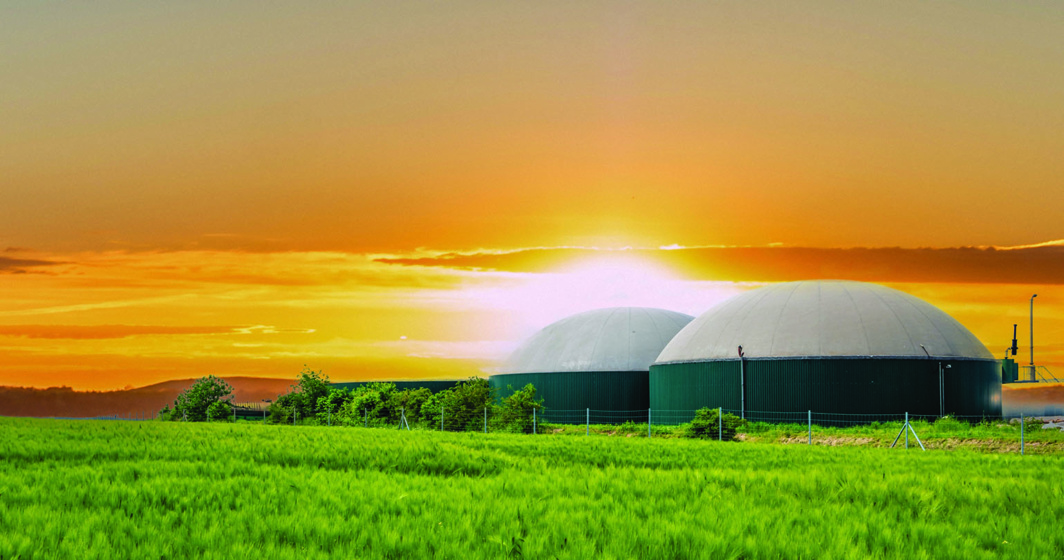A lot of people are talking about an alternative energy source, Biogas. But what is it and how is it made? Curtis de la Harpe has the run down on this alternative and rapidly growing green-power source, and what it might mean for the Plumbing industry in Australia.

For years the plumbing world has been hearing about the new green-energy hope, hydrogen, and its applications both in the industrial and residential spaces. However, recently there has been entry being bandied around, biogas and in-turn biomethane.
What is Biogas?
Biogas is a renewable energy source that is produced when organic matter, such as food waste, agricultural waste or sewage, breaks down in an oxygen-free environment. The gas produced is made of several chemical compounds, however the primary component is methane (CH4).
This methane can be used much in the same way as we currently use fossil-fuel based gas for energy production. Compared to other hydrocarbon fuels, methane produces less carbon dioxide per unit of heat released. This breakdown of biomass occurs by bacteria eating it in an oxygen-free environment. It is a process called anaerobic digestion and is like fermentation by yeast in beer.
What is Biomethane?
Biogas contains between 50-70% methane. For it to be utilised in the current natural gas grid or as a transport fuel, it needs to be purified to 95-98% methane, which is known as biomethane. You can burn biogas for energy; however, it is far less efficient than the much purer form, biomethane.
By generating biomethane for fuel, we can create a full recycling loop for spent biomaterials. By utilising capture technologies on compostable materials, you create soil rich for growing and fuel that can be used in place of traditional fuels.
Methane can be used as a replacement for natural gas in almost all applications with no modification to the appliance. So, the potential roll out would be much easier than alternative green fuels that would need major infrastructure upgrades.
Is this a “green” technology?
Yes. We create methane in the form of biogas in our everyday lives.
In most cases it is not captured, it is instead released into the atmosphere. This can occur through landfills or wastewater treatment.
By capturing biogas and using it as a fuel source, we are using the gas by burning it, which releases less emissions into the environment. It is not completely clean as there are still some emissions created when you burn methane, however it is far “greener” than burning hydrocarbon-based fuels or simply allowing methane to be released to the atmosphere.
To put this into perspective. For every tonne of biowaste that is thrown out, the equivalent of 6.2 tonnes of CO2 is created in the form of methane.
Methane is 86 times more potent than CO2 to the environment over 20 years.
To capture and use this methane rather than have it escape is considered carbon negative as the emissions created by burning methane are less than those created when it simply escapes into atmosphere.
Is this new?
Yes and no. Biomethane is not a new concept globally or even in Australia. However, large-scale infrastructure projects in Australia are quite new. With the focus on Australia becoming net zero, a number of gas producers are looking to generate biomethane in the near term. Jemena has been working with Sydney water for some time to turn wastewater into useable methane gas. This has led them to identify new sources of biomethane like landfill and agricultural wasteplants. In June 2023 Jemena stated injecting biomethane into the NSW gas network.
In Victoria, Melbourne Water has been collecting biogas from the sewage that they are treating to generate the power to run the facility. Treating wastewater is an energy intensive process and the Western Treatment Plant generates 80% of its power from the wastewater it is treating. So, what is the rest of the world doing?
Countries across Europe have long had access to renewable gas, with that access through existing gas pipeline infrastructure or behindthe-meter plants ramping up in recent years.
Last year alone, there were 149 biomethane plants commissioned in France, either supporting industry and communities directly, or injecting into existing pipeline networks. Denmark has already transitioned to 25 percent biomethane and has set a target of reaching 100 percent by 2034.
Last year the European Commission set a target for its member states to increase ten-fold biomethane production by 2030, which will take last year year’s annual production total of 3.6 billion cubic metres to 35 billion cubic metres or 1230 petajoules which is more than Australia’s domestic gas use, outside of LNG export production.
What does it mean for plumbing?
Since biomethane does not require retrofitment of existing appliances, it can be directly injected into the current grid, it has no extra requirements for storage and there is no direct impact on plumbers in terms of day-to-day application.
However, for our industry it has the potential to help. There is a big push from State and Federal governments for the electrification of Australia, which in many ways does not include a future for gas in residential and government-owned buildings.
Biomethane opens a carbon neutral, if not negative, option for gas that was not there with hydrogen. It allows for gas manufacturing to be a viable industry in Australia while still allowing for the plans for the 2050 targets. It just requires government and industry to take up this option.
Biogas is just one of the alternative gas options that Australia and in-turn the world is looking to as we pay greater attention to the importance of becoming carbon neutral. Unlike far more complex gas production options like Syngas (Gasification), biogas is the most attractive to governments and industrial investors, and it therefore the most likely to be viable for long-term implementation.
Master Plumbers Australia New Zealand (MPANZ), which comprises all plumbing-industry associations across the two countries are signatories to the Renewable Gas Challenge along with several manufacturers and other industry stakeholders. All signatories support the national certification of biomethane and have called for policy reform by the Federal Government noting it would lay the foundation for Australia’s own domestic renewable gas sector, lead to greater investment, significant development and, subsequent, increase in supply and prices comparable to natural gas.
Share this Article






